This time a year ago, we were crossing fingers that floors would be finished, scaffolds would go away, artifacts would appear and maybe, just maybe, a few people might decide to show up for the New Mexico History Museum’s grand opening on May 23, 2009.
Boy, were we surprised. Not only did the interior look as spit-polish as the exterior, but more than 20,000 people stood in blocks-long lines opening weekend outside …..

… and inside …
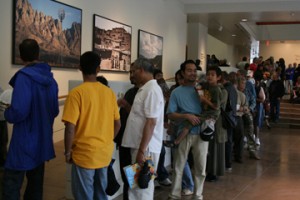
…waiting for a peek. (Worth noting: Those people who not only stood in the waiting lines but did so as a thunderstorm threatened to drown them.)
Since that auspicious start, we’ve drawn more than 150,000 visitors (more than doubling the attendance of our predecessor, the Palace of the Governors); held a packed schedule of lectures, workshops and performances; played host to the Crown Prince of Spain; and carried home an armload of awards.
In honor of its accomplishments and in gratitude to those who helped make the first year such a success, the Museum of New Mexico Board of Regents voted to open the museum for free May 22 and 23.
“We want to throw a party to say `thank you’ for everything that New Mexicans and out-of-state visitors have done for us,” said Dr. Frances Levine, director of the museum. “The outpouring of support from visitors, scholars, donors, businesses, and especially our volunteers has carried us beyond our expectations.”
The highlight of the free “Wild Weekend” is the opening of Wild at Heart: Ernest Thompson Seton, an original exhibit created with special support from the Academy for the Love of Learning, home of the Seton Legacy Project.
“It took 20 years and the hard work of many dedicated staff members, volunteers and donors to create this wonderful new museum,” said Stuart Ashman, State Cultural Affairs Department Secretary. “The overwhelming successes that we’ve witnessed during its first year of life are endorsements of these efforts.”
The full weekend schedule:
Saturday, May 22
10 am – 5 pm: Free admission, plus a sneak peek at the new exhibit, Wild at Heart: Ernest Thompson Seton, from 12 – 5 pm.
12 – 2 pm: The Wildlife Center in Española displays an assortment of the wild mammals and raptors it has rescued. Palace Courtyard.
Sunday, May 23
10 am – 5 pm: Free admission. Grand opening of Wild at Heart: Ernest Thompson Seton. Albert and Ethel Herzstein Changing Exhibitions Gallery.
12 – 4 pm: Wild Spirit Wolf Sanctuary brings a live wolf to the Palace Courtyard. Special program at 1:30 pm.
2 – 4 pm: Wild at Heart opening reception, hosted by the Women’s Board of the Museum of New Mexico. Booksigning of Ernest Thompson Seton: The Life and Legacy of an Artist and Conservationist with author and guest curator David L. Witt. Palace Courtyard.
Upon opening, the 96,000-square-foot History Museum joined a campus that included:
The Palace of the Governors, the nation’s oldest continuously occupied public building; Fray Angélico Chávez History Library; Palace of the Governors Photo Archives; Palace Press; and Portal Artisans Program. In its last year as a solo museum, the Palace drew 68,454 visitors.

Major accomplishments of the last year include:
Renovation of the Palace Press, including the addition of a new permanent exhibit recreating famed artist Gustave Baumann’s original printing studio
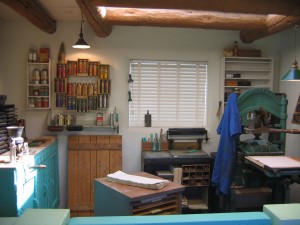
Opening the exhibit Santa Fe Found: Fragments of Time and hosting a series of lectures on the founding of the city, in honor of its 400th birthday
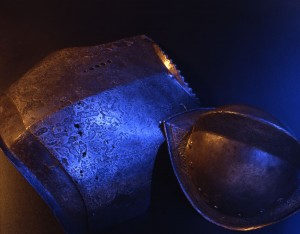
Moving 3,700 textiles and 10,000 artifacts (including 1,404 pieces of furniture) into new, state-of-the-art collections storage inside the museum
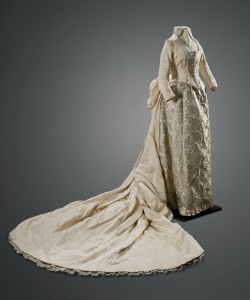
Acquisition of an 1842 book printed by Padre Antonio José Martínez on the first press in New Mexico, as well as letters written by Billy the Kid to Gov. Lew Wallace
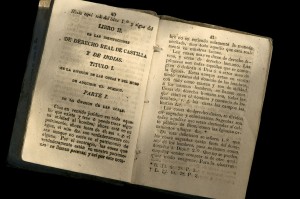
Winning a $147,000 grant from the Institute for Museum and Library Services to partner with KNME-TV on development and broadcast of history documentaries
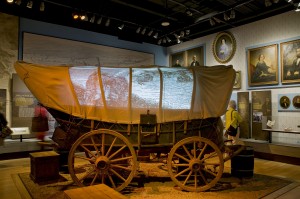
Playing host to His Royal highness Prince Felipe of Spain and his wife, Letizia, during a 400th Anniversary event
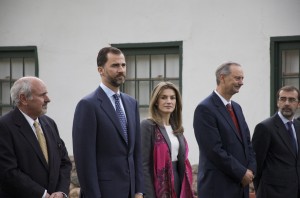
Publication by the Palace Press of Santa Fe Poet Laureate Valerie Martinez’s book, This Is How It Began, commemorating the 400th anniversary
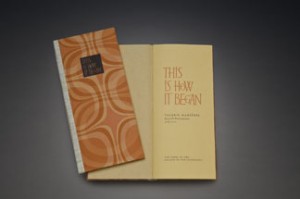
Unveiling the commemorative Bill Mauldin stamp with the US Postal Service
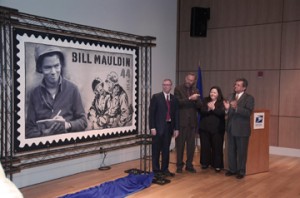
- The New Mexico Association of Museums’ 2009 Edgar L. Hewett Award
- True West magazine’s Best Western Museum of 2010
- Two first-place honors from the American Association of Museums for the grand-opening advertising and publicity campaign
- The Governor’s Commission for Community Volunteerism’s 2009 Nonprofit Program Award
- An architectural design award from the New Mexico Historic Preservation Division
- Two awards from the New Mexico Historical Society, for publication of Telling New Mexico: A New History, the book accompanying the museum’s core exhibition; and for educational programs ranging from the Web site to interactive exhibits, curricula, lectures, events and more
- Two awards for publication of the book, Through the Lens: the 2009 PubWest Book Design Award; and one of the top 12 Southwest books of 2009 by the Arizona Historical Society
“Visitors tell us time and again that they love what we’re doing – and that they want more,” Levine said. “Our goal is to continue bringing forward even more of the stories that shaped the West, more exhibitions, more lectures, and more ways for people to engage with history and be inspired to explore more of New Mexico.”

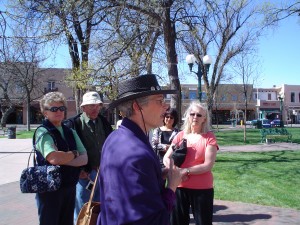 “The Italians did not have tomato sauce,” declared Pat Kuhlhoff. “The Swiss did not make chocolate. And there was never a potato famine in Ireland until Christopher Columbus discovered the Americas.”
“The Italians did not have tomato sauce,” declared Pat Kuhlhoff. “The Swiss did not make chocolate. And there was never a potato famine in Ireland until Christopher Columbus discovered the Americas.”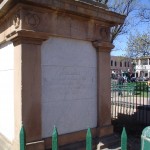 Standing in the Plaza, Kuhlhoff points to the obelisk commemorating those who died in the so-called Indian wars. She tells of how the word “savage” was chiseled out of its inscription –
Standing in the Plaza, Kuhlhoff points to the obelisk commemorating those who died in the so-called Indian wars. She tells of how the word “savage” was chiseled out of its inscription – 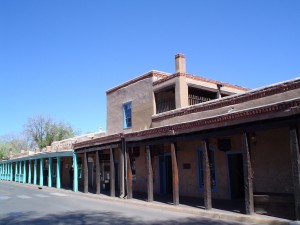 On the corner of Cathedral and Palace, she compares and contrasts Territorial, Pueblo, Mission and Romanesque architectural styles.
On the corner of Cathedral and Palace, she compares and contrasts Territorial, Pueblo, Mission and Romanesque architectural styles.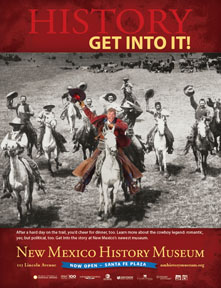
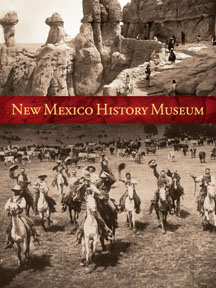 That campaign just won honors from the
That campaign just won honors from the 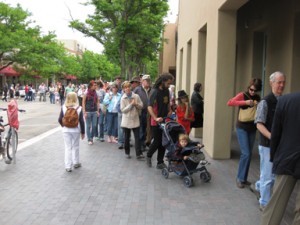
 Also in the magazine is an article noting 25 kid-friendly museums, and it names the Native American Artisans Portal Program (left) at the Palace of the Governors.
Also in the magazine is an article noting 25 kid-friendly museums, and it names the Native American Artisans Portal Program (left) at the Palace of the Governors.